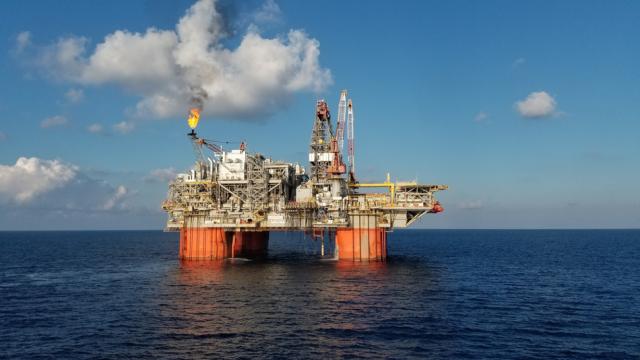
Sustained low oil prices have cast a pall on the offshore industry, but despite the very real likelihood that oil prices will remain at about $60 for the foreseeable future, operators in the Gulf of Mexico (GoM) are not throwing in the towel. Instead, they are looking closely at their deepwater assets and asking not if they can be developed but how.
GoM exploration activity in 2017 was a good indicator of the level of interest in deep water. Nearly all the GoM discoveries in both the U.S. and Mexico were deep- and ultradeepwater finds, a sign that operators are still pursuing deepwater plays and figuring out how they can be profitable at $50 and below.
| Operator | Field | Country | Sector |
|---|---|---|---|
| Pemex | Doctus | Mexico | Ultradeep Water |
| Anadarko Petroleum Corp. | Calpurnia | U.S. | Deep Water |
| LLOG Exploration Co. LLC | Khaleesi | U.S. | Deep Water |
| LLOG Exploration Co. LLC | Mormont | U.S. | Deep Water |
| Deep Gulf Energy LP | Rampart Deep | U.S. | Deep Water |
| Royal Dutch Shell Plc | Whale | U.S. | Ultradeep Water |
| BHP Billiton Ltd. | Wildling | U.S. | Deep Water |
| Talos Energy LLC | Zama | Mexico | Shallow Water |
Of the GoM discoveries recorded between January and October 2017, the majority were in deep and ultradeep water. (Source: Clarksons Research)
Some analysts continue to see the area as attractive. In a recent interview with E&P, Deborah Byers, U.S. Oil & Gas Leader; Americas Industry Leader at EY, said she is optimistic about deep water, pointing out that the industry needs to open up new horizons. “Even if demand is flat,” she said, “we have to continue to make investments to meet demand on a global basis.” Another reason for her optimism is that cost curves have come down significantly in deepwater operations.
“Some of this is transferring technologies and methodologies that the companies have learned from offshore operations, but some of it is just being leaner and meaner,” Byers said, and this leads to efficiencies. “All of that discipline is finally coming to fruition.”
Companies like BP are starting to reap the benefits. The Thunder Horse South Expansion is a case in point. In January 2017 the company announced that field startup was 11 months ahead of schedule and $150 million under budget. This pronouncement followed the company’s official announcement in December 2016 that the Mad Dog 2 project also would move forward. BP spent two years revising its development concept for Mad Dog 2 and managed to reduce the overall project cost by 60% in the end.
BP Group CEO Bob Dudley said in an official statement that progressing Mad Dog 2 “shows that big deepwater projects can still be economic in a lowprice environment in the U.S. if they are designed in a smart and cost-effective way.”
Around the industry companies are making the critical investments that will allow innovation to flourish. A team from Robert Gordon University in Aberdeen in collaboration with funding partners The Oil & Gas Technology Centre, KCA Deutag and Drilling Systems along with technical support from Baker Hughes, a GE company, has developed a world-first decommissioning simulator for well plugging and abandonment to support decommissioning activities. And TechnipFMC has released what it calls Subsea 2.0, a design the company said costs roughly 50% of a traditional subsea system that can be deployed almost 12 months faster.
While the obstacles to profitable deepwater development are significant, it is clear that today, as in the past, the offshore industry is rising to the challenge with creative solutions.
Recommended Reading
Marketed: Team Operating Gulf Coast Opportunity
2024-03-19 - Team Operating LLC has retained PetroDivest Advisors for the sale of certain oil and gas leasehold and related assets spanning multiple counties in Texas, Louisiana and Mississippi.
Marketed: Williston, Powder River Basins 247 Well Package
2024-03-11 - A private seller has retained EnergyNet for the sale of a Williston and Powder River basins 247 well package in Sheridan, Montana, Burke and McKenzie counties, North Dakota and Campbell County, Wyoming.
Marketed: KJ Energy Operated Portfolio in East Texas
2024-04-16 - KJ Energy has retained TenOaks Energy Advisors for the sale of its operated portfolio located in East Texas.
Marketed: Stone Hill Minerals Holdings 95 Well Package in Colorado
2024-02-28 - Stone Hill Minerals Holdings has retained EnergyNet for the sale of a D-J Basin 95 well package in Weld County, Colorado.
Marketed: Stone Hill 41 Well Package in Howard County, Texas
2024-02-16 - Stone Hill Exploration and Production has retained EnergyNet for the sale of a Midland Basin 41 well package (11 PDP wells, 5 WIPs and 25 PUD locations) in Howard County, Texas.
